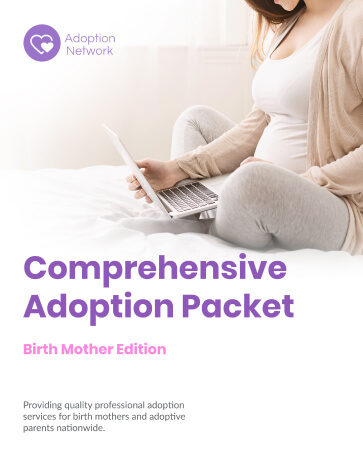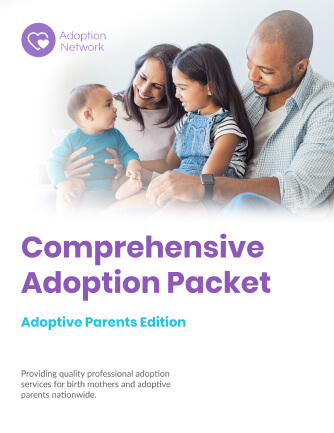
Birth Father Rights in Adoption
There are many adoption articles that focus on the Birth Mother and her role in the adoption process.
However, it is important to know that the Birth Father also has a role, whether or not he is an active part of the adoption journey. Giving a baby up for adoption without the father’s consent requires special legal processes that vary depending on the state where the adoption is taking place. During the adoption process, the biological father of the baby may be referred to as the birth, alleged, presumed, reputed, or putative father.
States’ Definitions of ‘Father’
The time of conception or birth of their child or whose paternity has been otherwise determined by a court. There is no one definition of ‘father’ in the US but there are several definitions for the relationship between a man and child.
The term ‘legal father’ generally refers to a man married to the mother at the time of conception or birth of their child or whose paternity has been otherwise determined by a court.
The term ‘putative father’ generally refers to a man who is the alleged biological father of the child but whose paternity has not been legally established.
The term ‘alleged father’ generally refers to a man who is alleged to be the genetic father or a possible genetic father of a child but whose paternity has not been determined.
The term ‘acknowledged father’ generally refers to a man who has established his father-child relationship by signing an acknowledgment of paternity.
The term ‘adjudicated father’ generally refers to a man who has been adjudicated by a court to be the father of a child.
The term ‘presumed father’ generally refers to a man who is recognized as the father of a child.
Each state will have its own specific definition as to what legally classifies a man as a father. Many state that a man can be presumed to be the father of a child if any of the following circumstances are met:
- He and the child’s mother are or were married to each other, and the child is born during the marriage or within 300 days after the marriage ended.
- Before the birth of the child, he and the child’s mother attempted to marry, and the marriage is or could be declared invalid, and the child is born during the marriage or within 300 days after the marriage is terminated.
- With his consent, he is listed as the father on the child’s birth certificate.
- He has acknowledged his paternity in writing.
- He is obligated to support the child, either by voluntary agreement or court order.
- While the child is a minor, he has resided with the child and openly claimed the child as his biological child.
Constitutional Rights – Unmarried Fathers
Historically, unmarried fathers have had fewer rights with regard to their children than either unwed mothers or married parents.
Over the past several decades, unmarried fathers have challenged the termination of their parental rights under the Fourteenth Amendment when Birth Mothers relinquished their children for adoption without their consent. In a series of cases, the U.S. Supreme Court affirmed the constitutional protection of such a father’s parental rights when he has established a substantial relationship with his child. The Court found that the existence of a biological link between a child and an unmarried father gives the father the opportunity to establish a substantial relationship, which it defined as the father’s commitment to the responsibilities of parenthood, as demonstrated by being involved or attempting to be involved in the child’s upbringing.
The laws regarding the termination of parental rights or adoption proceedings for unmarried fathers are still determined by the individual states.
Paternity Registries
Many states have provisions for a father to voluntarily acknowledge paternity or the possibility of paternity of a child born outside of marriage. This can be done through a state’s established paternity registry or through provisions for voluntary acknowledgment of paternity through forms that are filed with the state’s Social Services Department, Registrar of Vital Statistics or other similar entity.
Acknowledgment of paternity or registration with a putative father registry ensures certain rights for an unmarried father, such as the right to receive notice of court proceedings regarding the child, petitions for adoption, and actions to terminate parental rights. In some states with putative father registries, filing with the registry is the sole means for establishing this right of notice.
Alternate Means to Establish Paternity
States may also have alternative means to establish paternity.
States differ in the information they need for registration or acknowledgment of paternity; however, registration typically includes:
- Current full name, address, Social Security number, and date of birth of the father and the mother
- The child’s current full name, date of birth, and place of birth
- Signature lines for the mother and the father
- Signature lines for witnesses or notaries
In many states, registration also includes a statement to be signed by both parents indicating they understand that signing the affidavit of paternity is voluntary and that they understand what their rights, responsibilities, alternatives, and consequences are. The form also must include a brief explanation of the legal significance of signing a voluntary paternity affidavit and a statement that both parents have 60 days to rescind the paternity acknowledgment affidavit. States may also require additional optional information based on State statutes or regulations.
Revocation of Claim
Many states make provisions in their statutes that allow putative fathers to revoke or rescind a notice of intent to claim paternity. Some allow revocation at any time. In others, revocation is effective only after the child’s birth and yet others allow revocation of a registration prior to the child’s birth only.
Most states limit the right of rescission to 60 days after the paternity claim is submitted or prior to a court proceeding to establish paternity, whichever occurs first. A claim of paternity usually may not be revoked after the 60-day period except by court action on the basis of fraud, duress, or material mistake of fact.
Most states will accept a written, notarized statement for rescission. However, some require a court proceeding for revocation of a claim. Access to information maintained in registries also varies from state to state. Many jurisdictions permit certain persons access to registry records. In general, these are people with a direct interest in a case. Typically, persons entitled to access include Birth Mothers, courts, attorneys, licensed adoption agencies, prospective Adoptive Parents, State Departments of Social Services, State offices of child support enforcement, Registries of States, or any other person upon a court order for good cause.
DOWNLOAD the full “Pregnancy & Adoption Planning Guide” here
Available 24/7 to Answer Your Adoption Questions


Search Adoption Network
Speak with a Specialist 1-800-367-2367
